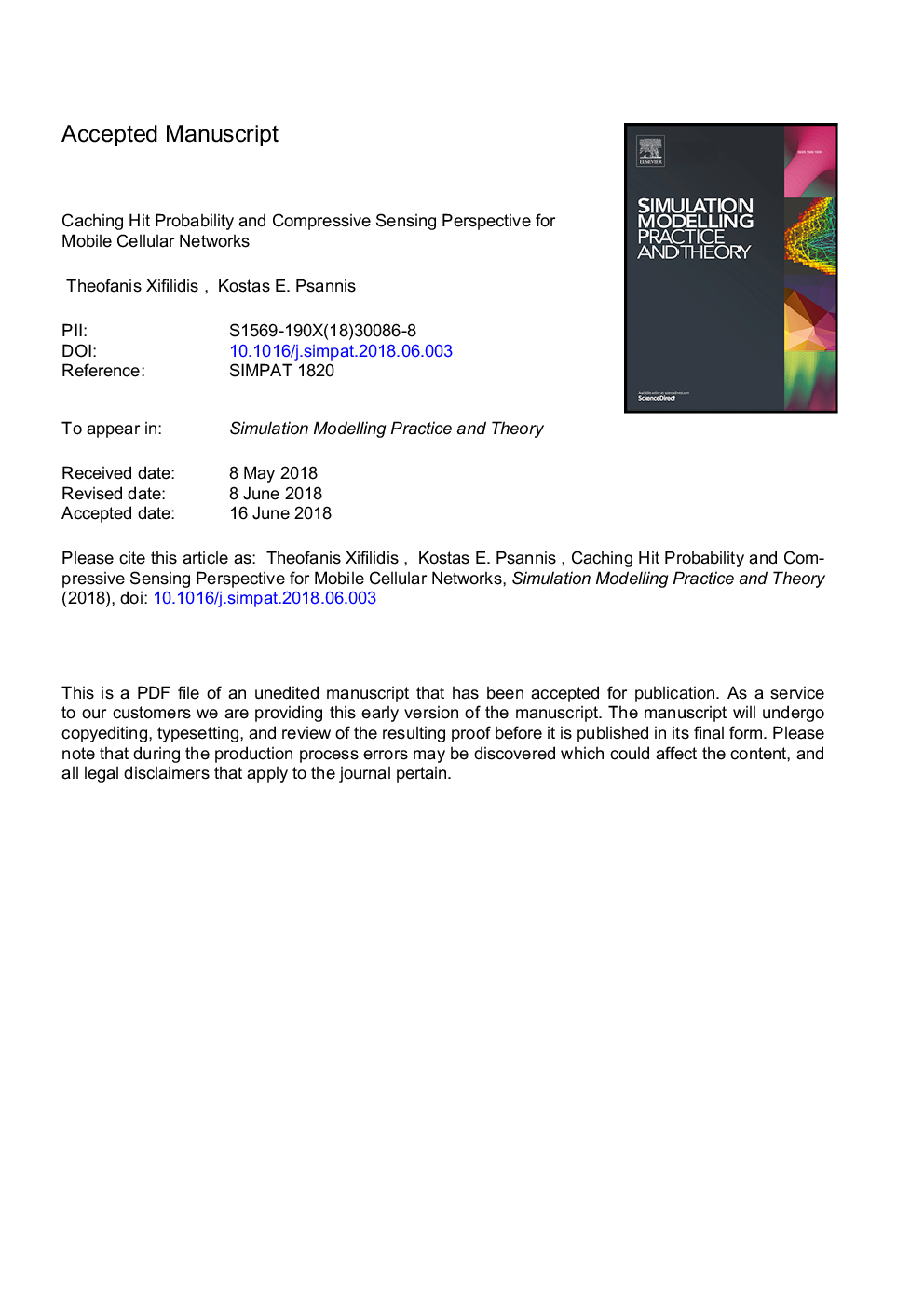| Article ID | Journal | Published Year | Pages | File Type |
|---|---|---|---|---|
| 6902466 | Simulation Modelling Practice and Theory | 2018 | 14 Pages |
Abstract
Ever since the advent of wireless communications, there has been a tremendous growth in data traffic and service demand. Both of the above quantities are expected to explosively dominate wireless communication networks, as we move on to the future 5G wireless communication systems. This paper involves the so-called hit probability related to data caching, a technique that mainly alleviates backbone network congestion and reduces latency, by storing frequently accessed data in mobile users' cache (mobility-aware caching) and leaves the least popular data for recovery from base stations. The hit probability is defined in the literature as the probability of specific file request by a user together with the successful delivery of the data packet to the user/network node that made the request. Considering three distributions, the uniform, the well-established Zipf-like distribution and the normal distribution, we allow a varying number of cached filles and observe the curves representing the hit probabilities and perform comparison. We provide interpretation of the related to optimality results i.e. greatest achievable hit probability. In a pico-cell of a cellular network of minimum radius of 50â¯m and a maximum radius of 200â¯m, we derive the transmission power level and verify that it complies to the typical transmission power of a pico-cell. A final remark involves the Compressed Sensing sparsity concept, where considering that the possibility that a file is cached with probability p, and not cached with probability 1â¯ââ¯p, we examine the «sparsest» and «densest» scenario with respect to the number of cached files n opposed to the total N files in the aggregate users' cache, plotting the equivalent total probability. A final conclusion sets the issues of future work.
Related Topics
Physical Sciences and Engineering
Computer Science
Computer Science (General)
Authors
Theofanis Xifilidis, Kostas E. Psannis,
